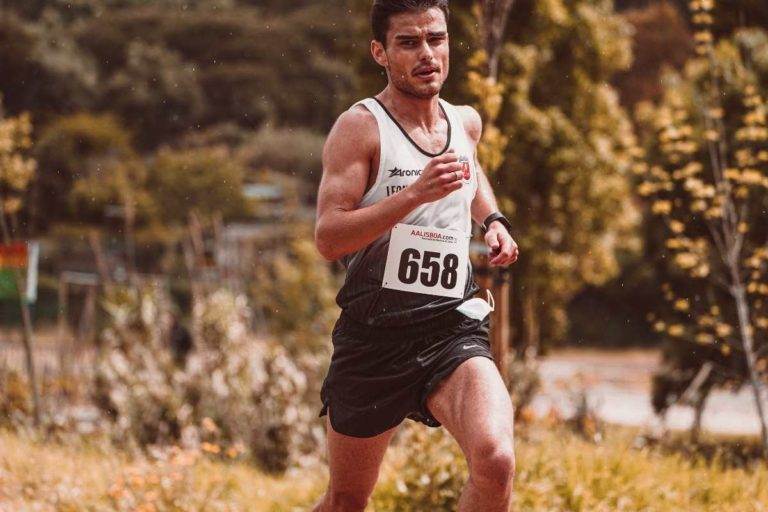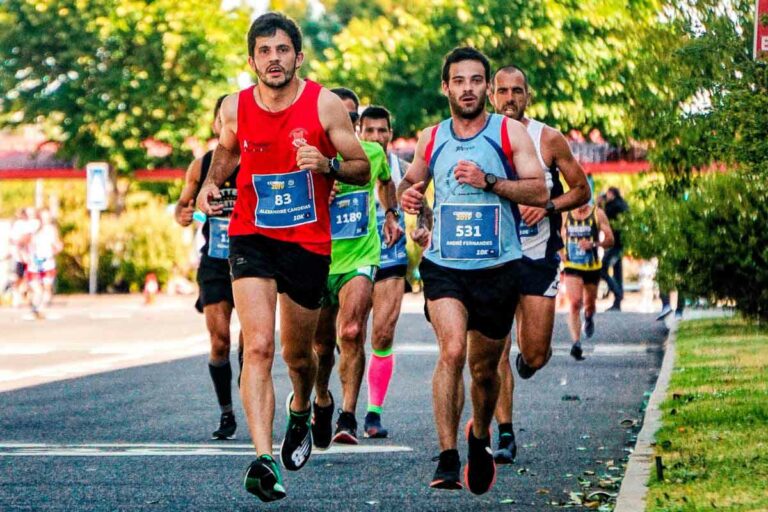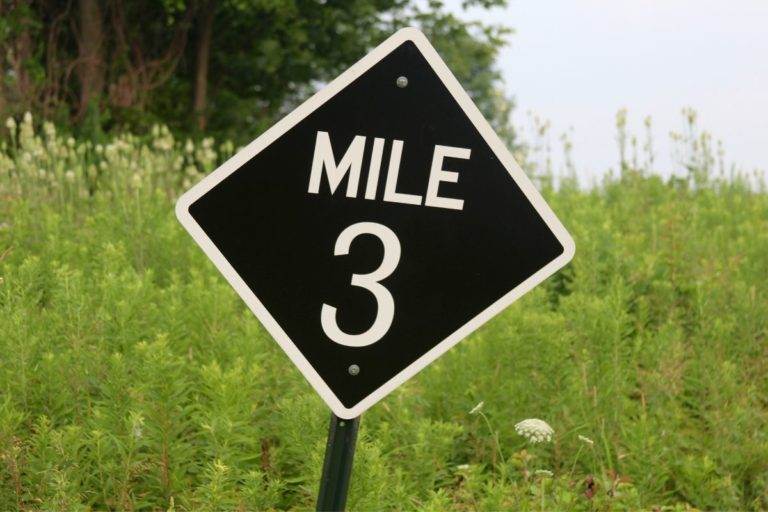What Are Strides In Running? How They Benefit Your Performance

There are lots of techniques to learn that will help you to become a better runner, allowing you to manage your energy better and cover longer distances.
However, it can be difficult to learn all the techniques when there are so many of them. For example, you might have heard the term “STRIDE” being used a lot amongst runners, but not know what it is.
So, what are strides in running?
The short answer is a running stride is a short burst of high-frequency running, employed between breaks of casual walking or running.
They’re done as a form of recovery run, helping your body to recover after you’ve worked it too hard.
There’s lots more to learn about strides in running, though, and we’ve got all the answers for you in our handy guide below.
What Are Strides In Running? Take Your Running to the Next Level
As we touched on in the intro, a stride in running is the term given to brief bursts of high-frequency running, which are carried out between breaks of casual walking or running.
The brief bursts that a runner will usually carry out their strides for about 30 seconds, with the runner working at about 80% of their running capacity.
On top of that, a typical runner will try to cover between 50 and 100 meters of ground in each stride.
A stride in running is also referred to as an acceleration, pickup, or a strider. They act as a recovery run of sorts, which are done to help a runner’s body to recover after strenuous workouts.
The Times To Run Strides
Running strides is an incredibly useful technique to have, and there are a few specific times where you should employ them.
For one, you should run strides just before a race. If you use the same surface that you’ll be running on, it’ll help you to prepare, and it’ll also work wonders as a warm-up.
Secondly, you should run strides at the end of a run, because they’re a great way to wind down. Thirdly, they’re good for a session of speed work ( workout where you run at intervals around your VO2 max pace).
How Do You Run A Stride?
There are a handful of steps that you’ll want to follow in order to run a stride. After some practice with these, you’ll be able to do it quite naturally.
Step One: Muscles And Warming Up
Firstly, you’ll want to start by warming up. Begin by stretching your muscles. If you exercise without doing this first, you could run the risk of injury.
After that, perform a 10 minute slow run, which will also help to make your muscles and tendons stretched and more flexible.
Step Two: Finding The Location
Once you’ve warmed up and stretched, you need to find an ideal place to practice your strides.
A flat and open space is perfect. Parking lots or running tracks are great for this sort of thing, especially with their size.
Runners perform strided over anywhere between 50 and 100 meters, so you need somewhere with that room.

Step Three: Accelerating Evenly
It’s essential that you only accelerate evenly when you’re practicing your strides, rather than going at full speed. Evenly get faster, but then start to slow before you reach top speed, decelerating right down to the end of the stride.
Step Four: Perfect Posture And No Tension
As with all running, posture is very important to your success.
As you’re making your strides, ensure that your posture is correct. You want your body to be tilted forward a little, your steps to be underneath your center of gravity, and your shoulders to be back.
On the topic of feet, let your feet push you along.
On top of this, you need to make sure you’re carrying no tension in your body. Strides will often make a runner tense, and a tense body is not going to help anyone move properly.
As a result, unclench your fists and loosen your arms, letting your body relax.
Step Five: Building Stride Strength
While running a stride on a hill will be something you’ll have to work up to, you can make some gradual progress by making strides on steady inclines.
These will give you a more measured build up in strength, allowing you to practice and improve without being overwhelmed.
Similarly, you can perform strides on a stray downhill grade too. In fact, this will exercise different muscles, making you more well-rounded.
Why Should You Run Strides?
1. Easy Recoveries
If you’re running in a competitive race, then you’ll likely have been going all out at some points and exerting yourself fully.
These can be difficult to recover from, so strides allow you to still keep some speed while not tiring yourself further.
Since they’re an in-between point between a gentle run and a quick, intense run, these short bursts will give you a good amount of speed without the exhaustion.
2. Running Economy
Running economy is a term that refers to your efficiency as a runner, and practicing strides will help you to improve it.
Though you might not have expected it, strides improve a lot of essential parts of your body and will help to make them more efficient.
For example, your respiratory (lungs) and circulatory (heart) systems get a lot of practice, as do your muscles.
3. Step Count
Employing strides a lot will also help to increase the amount of steps you take. This is known as your “leg turnover”, and it will become handy all in other aspects of your running too.
4. Aerobic And Anaerobic Improvement
Aerobic exercise will help to increase your breathing rate and heart rate over a long while, while anaerobic exercises are all about quick bursts of action.
Running strides allows you to exert both kinds, and will therefore help to improve them over time.
See also: How To Lower Heart Rate While Running: 5 Simple Strategies
Final Thoughts
Strides are brief bursts of high-frequency running that you can do, and they help to improve your running abilities, form, mind, and more.
See also: What Is Cadence in Running? Is 180 SPM a Better Running Cadence?






